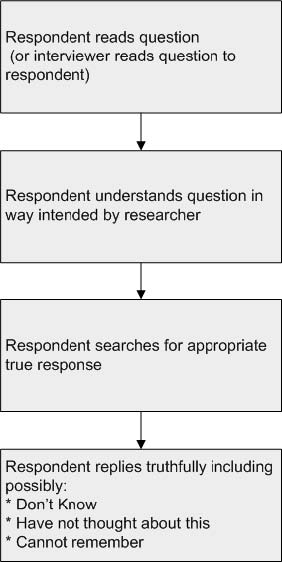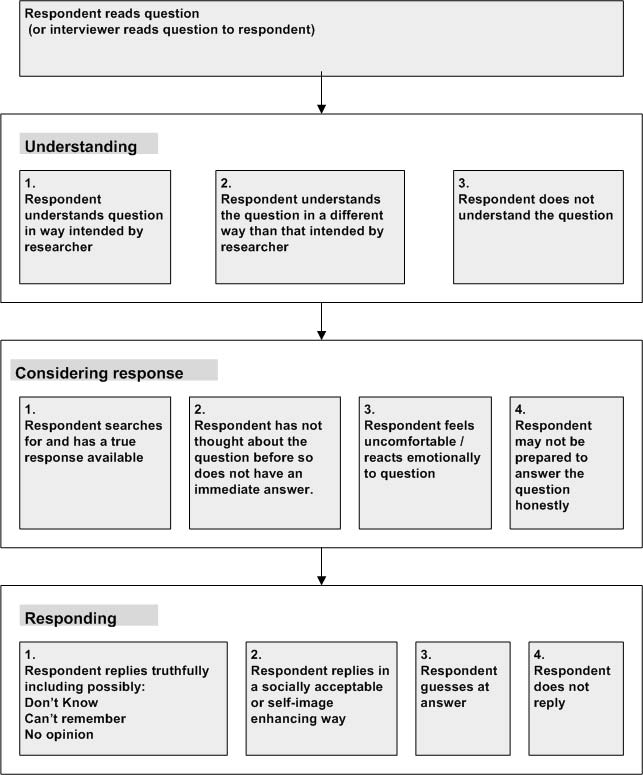When designing your survey questionnaire you assume the respondent understands the question and the way in which the question was intended.
It is expected the Respondent desires to answer the question and replies with a truthful and accurate response. If the answer is easily recalled by memory or if the answer can be easily worked out, the respondent has a higher percentage chance of answering truthfully. If they cannot recall the information or cannot easily work out the question, they will still answer appropriately because the question was self-explanatory, asked in proper context, and gave the appropriate range of response choices.
Questions need to be structured and worded specifically, to make this sequence of events plausible for the average Respondent.
Ideally, this is how question model should work:
Realistically, here is how a question model usually works:
Once you understand how a Respondent answers survey questions, you can construct your questionnaire for the most accurate survey outcome. By asking clear, concise and contextually based questions, the Respondent will interpret questionnaires correctly and respond truthfully.





